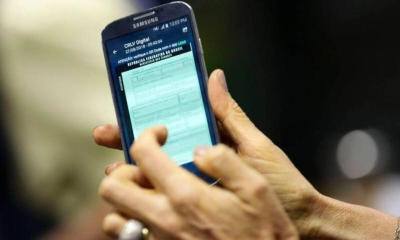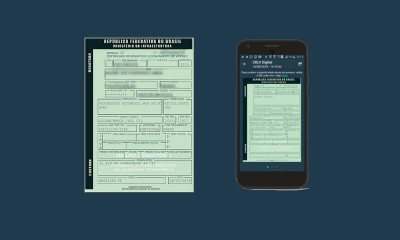How to Plan an Electric Car Trip: Tips and Tricks
Planning a road trip in an electric vehicle (EV) requires a bit more preparation than a traditional gas-powered car. While EVs offer many benefits, such as zero emissions and lower operating costs, they also have unique charging requirements and limitations. Therefore, it is important to plan ahead to ensure a successful and enjoyable EV road trip.

The first step in planning an EV road trip is to identify the destination and the route. EV drivers should research the charging infrastructure along the way and plan their stops accordingly. There are several websites and apps that can help EV drivers find charging stations, such as PlugShare, ChargePoint, and EVgo. It is also recommended to have a backup plan in case a charging station is out of service or occupied.
Another important factor to consider when planning an EV road trip is the vehicle’s range. EVs have different ranges depending on the model and battery size, so it is important to know how far the vehicle can travel on a single charge. Drivers should also factor in weather conditions, elevation changes, and driving speed, as these factors can impact the vehicle’s range. By taking these factors into account, EV drivers can plan their route and charging stops to ensure a smooth and stress-free road trip.
Planning Your Route
When planning an electric car trip, one of the most important steps is to plan your route. This involves choosing your destination, mapping out charging stations, and calculating distance and charging time.
Choosing Your Destination
When choosing a destination for your electric car trip, it’s important to consider the availability of charging stations at your destination and along the way. If you’re planning a trip to a national park or other remote location, you may need to plan your route carefully to ensure that you have access to charging stations when you need them.
Mapping Out Charging Stations
To ensure that you have access to charging stations throughout your trip, it’s important to map out charging stations along your route. Google Maps and other trip planners can be useful tools for identifying charging stations along your route.
Calculating Distance and Charging Time
When planning your route, it’s important to calculate the distance between charging stations and the amount of time it will take to charge your electric car. This will help you plan your stops and ensure that you have enough time to charge your car before continuing on your journey.
Overall, planning your route is an essential step in planning an electric car trip. By choosing your destination, mapping out charging stations, and calculating distance and charging time, you can ensure that your trip is safe, enjoyable, and stress-free.
Understanding EV Capabilities
Electric vehicles (EVs) are becoming increasingly popular due to their eco-friendliness and low operating costs. However, planning a long-distance trip in an EV requires a different approach than a traditional gas-powered car. Understanding the capabilities of an EV is crucial to ensure a safe and enjoyable trip.
Battery Life and Range
One of the most important factors to consider when planning an EV trip is the battery life and range. EVs have a limited range, and the distance they can travel on a single charge depends on various factors such as driving speed, terrain, and weather conditions.
It is essential to plan the route carefully and consider the distance between charging stations. Many EVs have a built-in navigation system that can help you find charging stations along your route.
Impact of Weather on Performance
Weather conditions can significantly affect an EV’s performance. Cold weather can reduce the battery’s range and increase the time it takes to charge. On the other hand, hot weather can cause the battery to degrade faster, reducing its overall lifespan.
It is essential to plan for these weather conditions when planning an EV trip. For example, in cold weather, it is recommended to preheat the car while it is still plugged in to conserve battery life.
Charging Options and Speed
EV charging options and speed can vary depending on the type of charging station. Level 1 charging, which uses a standard 120-volt outlet, is the slowest but most widely available option. Level 2 charging, which uses a 240-volt outlet, is faster and can charge an EV in a few hours. DC fast charging, also known as Level 3 charging, is the fastest but less common option and can charge an EV in less than an hour.
It is essential to research and plan for charging options along your route. Many EVs have a built-in charging station locator that can help you find the nearest charging station.
Overall, understanding EV capabilities is crucial when planning an EV trip. By considering factors such as battery life and range, weather conditions, and charging options, you can ensure a safe and enjoyable trip.
On the Road
Navigating to Charging Locations
When embarking on a long distance journey in an electric car, it is important to plan ahead and locate charging stations along the route. Many popular mapping apps, such as Google Maps and Waze, offer the option to search for EV charging stations. It is recommended to save these locations in advance and to keep a backup of the addresses in case of any technical difficulties with the app. Additionally, some electric car models have built-in navigation systems that can locate charging stations and provide directions to them.
Managing Energy Consumption
During a road trip in an electric car, it is important to keep track of the vehicle’s energy consumption to ensure that the battery does not run out of charge before reaching the next charging station. Most electric cars come with a dashboard display that shows the battery level and estimated range. It is also recommended to monitor the vehicle’s energy usage by keeping track of the kilowatt-hours (kWh) consumed per mile. This information can help drivers adjust their driving habits to optimize energy efficiency and extend the vehicle’s range.
Handling Unexpected Situations
Despite careful planning, unexpected situations may arise while on a road trip in an electric car. For example, a charging station may be out of service or occupied by another vehicle. In such cases, it is important to have a backup plan. Drivers can use mobile apps to locate nearby charging stations or search for alternative routes that have charging stations along the way. It is also recommended to keep a portable charging cable in the vehicle as a backup in case of emergencies.
Overall, planning a road trip in an electric car requires careful consideration and preparation. By locating charging stations, monitoring energy consumption, and preparing for unexpected situations, drivers can enjoy a smooth and stress-free journey.
Choosing an Electric Vehicle for Road Trips
When planning an electric car trip, choosing the right electric vehicle (EV) is crucial. Here are some factors to consider when selecting an EV for a long-distance road trip.
Comparing EV Models
There are several EV models available in the market, each with its own unique features and specifications. Some popular EVs for road trips include the Chevrolet Bolt, Nissan Leaf, Tesla Model 3, BMW i3, and Fiat 500e. It is important to compare these models and choose the one that best suits your needs.
Factors to consider when comparing EV models include:
- Range: The distance an EV can travel on a single charge. Look for models with a longer range if you plan to take long road trips.
- Charging time: The time it takes to charge the EV’s battery. Consider models with fast charging options.
- Battery size: A larger battery can provide more range, but it also adds weight to the vehicle.
- Price: EVs can be expensive, so consider your budget when choosing a model.
Long-Distance EVs to Consider
If you plan to take a long-distance road trip, consider EV models with a longer range. The Tesla Model 3, for example, has a range of up to 358 miles on a single charge, while the Chevrolet Bolt has a range of up to 259 miles.
Another option is to choose a plug-in hybrid, which combines an electric motor with a gasoline engine. This allows the vehicle to switch to gasoline power when the battery runs out, providing additional range.
Overall, when choosing an EV for a road trip, it is important to consider your specific needs and priorities. With the right EV, you can enjoy a smooth and eco-friendly road trip experience.
Frequently Asked Questions
What apps can help me plan my electric vehicle journey?
There are several apps that can help you plan your electric vehicle journey. Some popular ones include PlugShare, ChargePoint, and EVgo. These apps allow you to find charging stations along your route, check availability, and even reserve a spot. They also provide information on charging speeds and pricing.
Is it feasible to use an electric car for long-distance travel?
Yes, it is feasible to use an electric car for long-distance travel. However, it is important to plan your route carefully and make sure you have access to charging stations along the way. You may also need to make adjustments to your driving habits, such as driving more slowly to conserve battery life.
How can I integrate EV charging stops when planning a trip with Google Maps?
To integrate EV charging stops when planning a trip with Google Maps, simply enter your destination and select the “Electric vehicle” option under the “Mode” menu. Google Maps will then show you charging stations along your route and provide information on how long each stop will take.
What are the best strategies for planning an electric car trip across the USA?
The best strategies for planning an electric car trip across the USA include researching charging stations along your route, planning your route carefully to avoid running out of battery, and driving at a steady speed to conserve battery life. It is also a good idea to bring along a charging cord just in case you need to charge your car at a regular outlet.
Are there specific considerations for planning an electric vehicle trip in California?
Yes, there are specific considerations for planning an electric vehicle trip in California. The state has a large network of charging stations, but you may need to plan your route carefully to ensure that you have access to them. It is also important to note that California has strict emissions standards, which means that some electric cars may not be eligible for certain incentives.
Can Electrify America’s trip planner assist in organizing an EV road trip?
Yes, Electrify America’s trip planner can assist in organizing an EV road trip. The trip planner allows you to enter your starting point and destination, and then provides information on charging stations along the way. It also provides estimated charging times and costs, and allows you to reserve a charging spot in advance.
-

 Trânsito2 years ago
Trânsito2 years agoMudança ou Adição de Categoria da CNH: Como Fazer e Quais os Requisitos
-

 Trânsito2 years ago
Trânsito2 years agoCadastro de Instrutor de Trânsito: Como Fazer a Inscrição ou Renovação
-

 Trânsito2 years ago
Trânsito2 years agoCNH Digital: Como Funciona e Quais os Benefícios para os Motoristas
-

 Trânsito2 years ago
Trânsito2 years agoCertidão de Prontuário: Tudo sobre a Documentação do Condutor
-

 Trânsito2 years ago
Trânsito2 years agoAlteração de Dados Cadastrais: Como Atualizar as Informações do Veículo ou do Condutor
-

 Trânsito2 years ago
Trânsito2 years agoTransferência de Veículo: Como Fazer o Registro em Outro Estado ou Município
-

 Trânsito2 years ago
Trânsito2 years agoPerda ou Roubo da CNH: Como Solicitar a 2ª Via pelo Site do DETRAN
-

 Trânsito2 years ago
Trânsito2 years agoCRLV Eletrônico: A Nova Era da Documentação Veicular
